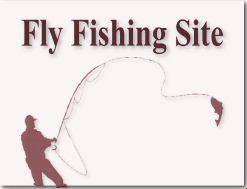|
|
ARTICLE
10
|
Fly Fishing Basics
Fly fishing is an enjoyable outdoor nature for the whole family. The breathtaking view of mountains, lakes and river plus the physical activity is perfect for a healthy break from the regular stress of job. The basic thing to know about fly fishing is to determine the type of fly to use. A fly is an artificial bait or fish lure that is used to imitate insects and small animals. The choice of fly is also based on the diet of the target species of fish to catch. There are five types of flies. The first type is the dry fly. It resembles insects floating on the surface of the water although some dry flies also imitate small kinds of animals like snakes, frogs and mice. The fly is tied to a hook to make it easily float. Many dry flies are greased with a special kind of floatant and dried to preserve buoyancy. The dry fly is a kind of artificial bait that is used to mimic insects under the surface of the water. These can be any aquatic insects, drowned insects or emerging insects called emergers. A wet fly resembles an insect under the water surface. Wet flies can imitate aquatic insects, drowned insects, or emerging insects (emergers). They can also imitate larger aquatic creatures such as crawfish or leeches. Wet flies are traditionally tied with a tail, body, wings, and soft hackle. Many kinds of fish like the Atlantic Salmon are attracted to other kinds of fish. The streamer fly is used to imitate injured fish as bait. The aggressive fish species are known to attack other fish while protecting spawning areas or when feeding. A terrestrial fly is prepared in such a way that it looks like any ground insect like grasshoppers, beetles, ants, crickets and moths that have fallen into the water. The terrestrial fly can be tied appropriately as either wet or dry fly. A nymph fly is prepared to mimic insects in their larval form. Common insect larva are those from the mayfly, diptera and caddis. Nymph flies are smaller than the hook itself and present a bigger challenge to the fly fishers, specially the beginners. Different species of fish can be caught in fly fishing. The most common are trout, which are found naturally in streams and lakes in Asia, Europe and throughout North America, and salmon, which is a popular health food known for its high protein, low fat levels and high Omega-3 fatty acids content. Other target species for fly fishing include bass, pike, snook, panfish, carp, redfish, tarpon, bonefish and striped bass. Hundreds of articles and resources about fly fishing can be found on the internet. For beginners, the best way to learn the techniques of fly fishing is to join a fly fishing organization or club. There are also holiday packages that include fly fishing as an activity that goes with camping, trekking and horseback riding. All over the world, many people are getting into fly fishing both as hobby and serious profession.
|


